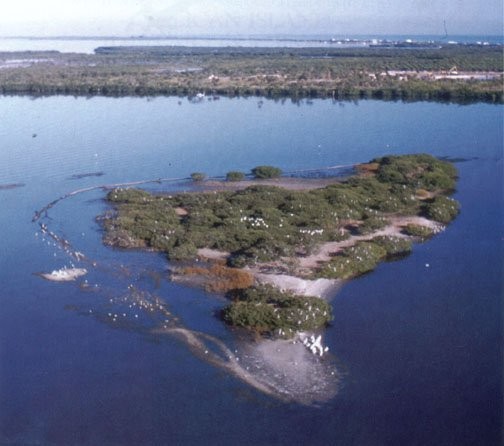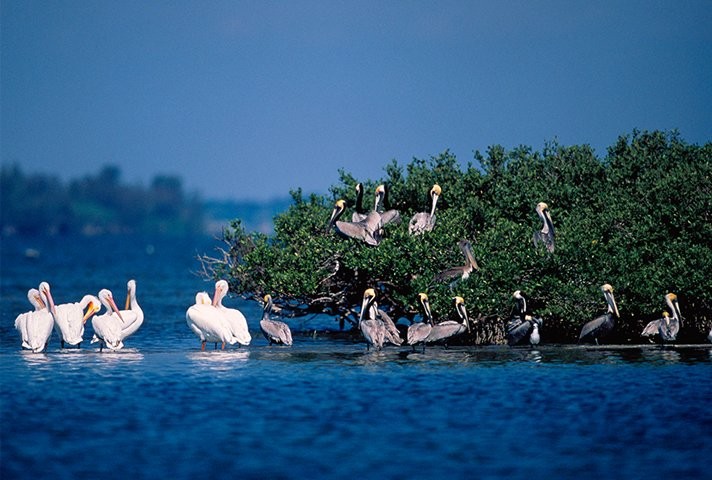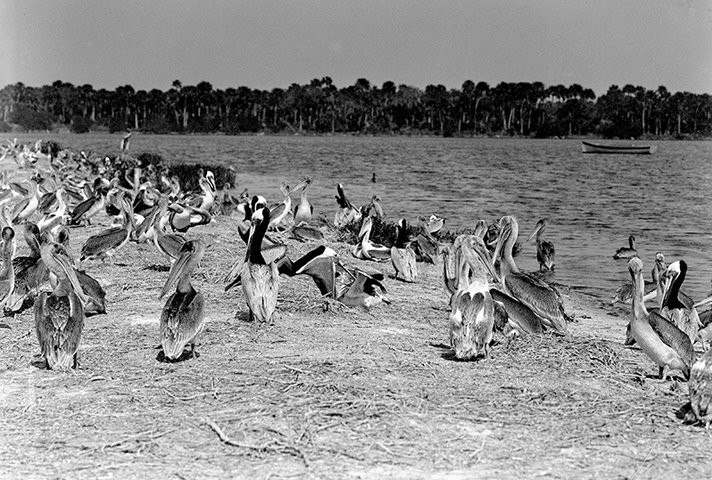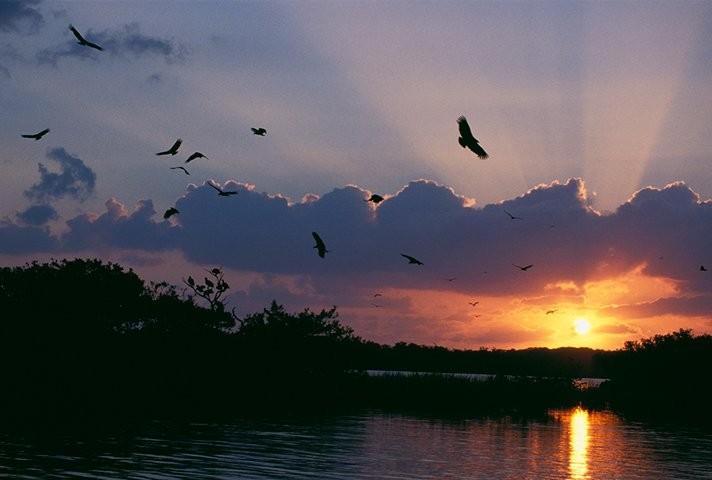Pelican Island National Wildlife Refuge
Introduction
Text-to-speech Audio
Images
A full look at Pelican Island from above.



Beautiful sunset seen from the island!

Backstory and Context
Text-to-speech Audio
Pelican Island National Wildlife Refuge is located in Vero beach, Florida, right off of the Indian river lagoons. It is considered a landmark and is a protected home to thousands of unique wildlife. It all began in the late 1800s when attention was called upon this little island due to ghastly abuse portrayed on the birds by plume hunters in the area. Plume hunters were hunters who hunted and killed birds for their beautiful and unique feathers. They did this so that they could use the feathers and they made a profit by doing this to make and sell extravagant hats and apparel because that was a very popular style during this time. We still are not completely sure how long it went on without being noticed but, PelicanIsland Preservation Society, talks about how it all started to be noticed when wildlife photographers and naturalists visited the island in the late nineteenth and early twentieth centuries. They showed photographic evidence of the sad tragedies that were falling on the innocent birds located on the island.
After that, people realized a change needed to be made. During this time, President Theodore Roosevelt heard of the commotion going on. When he saw the slaughter taken place, he too was shocked and took a stand to create protection of the birds and the island itself. Things such as these took time. Laws must be set, and a lot of people were to be involved, which can also cause projects to take much longer to pass, especially with the amount of land needed to be protected. It is also important to note, that this kind of law or wildlife refuge had never occurred before. In 1903, President Roosevelt publicly announced the protection of Pelican Island and banned all slaughter of the wildlife on that island. This was the first of many wildlife refuges that president Roosevelt would go on to help and protect during his presidency. Florida Rambler, says that president Roosevelt went on to create nearly fifty-five more wildlife refuges in the United States, with nine of them being just in Florida alone. Even after Roosevelts presidency, wildlife refuges continue to evolve all over the world. Currently, we have around five hundred and thirty-five wildlife refuges (Pelican Island Preservation Society). Pelican Island is important place in Florida and just sparked the beginning of many more protected wildlife homes all over the world. It is important to continue to bring awareness to these amazing refuges and all that they have to offer.
Not only was this island a huge achievement because it is now a protected place for the wildlife to live in a safe environment, but it was even a bigger deal because Pelican Island was the very first of many fully protected national wildlife refuges. It sparked a change for many more wildlife refuges to take place all over the world. Pelican Island is known to be, by far, the largest of the many wildlife refuges and it still continues to be fully protected today.
Over thirty different types of birds call Pelican Island its home. It is also used as a feeding ground and breeding ground and it also serves as a home and a place for recovery for many endangered or hurt animals. In 2010, U.S. Fish and Wildlife Service, shared a checklist consisting of over one hundred and forty different and unique kinds of birds who call Pelican Island home. Although, Pelican Island is home to mostly birds, there are several other animals around the island such as reptiles, mammals and sea animals, mainly consisting of several different species of fish.
Pelican Island National Wildlife Refuge still have people involved and continuing to grow and help the wildlife in the area. Even though it has been around for over one-hundred years, it has not been left with nothing more than protected land. The people involved go above and beyond to do more. They have specific goals they aim for and the Pelican Island Wildlife Refugewebsite goes into detail about each goal they have set. Their goals are to “protect the historical rookery on Pelican Island. Project, enhance and restore marsh and lagoon habitat for migratory birds. Provide habitat for threatened and endangered species. Protect Pelican Island as a National Historic Landmark, National Wilderness Area, and Wetland of International Importance. Increase public understanding through outreach, interpretation, environmental education, and compatible recreation” (U.S. Fish and Wildlife Service).
Pelican Island National Wildlife Refuge has made a huge difference and continues to be a success, even a hundred years later. It has impacted culture and the wildlife in huge ways. This historical landmark paved the way for many more refuges and the story is not over yet. History continues to be made at this site and many more like it.
Sources
“Home - Pelican Island - U.S. Fish and Wildlife Service.” Official Web Page of the U S Fish and Wildlife Service, www.fws.gov/refuge/pelican_island/.
Chesemore, David L. “First U.S. National Wildlife Refuge Is Established.” First U.S. National Wildlife Refuge Is Established, 2017, pp. 4.
“History of Pelican Island NWR.” Pelican Island Preservation
Society, www.firstrefuge.org/history-of-pelican-island-nwr/.
“Pelican Island: Oldest Bird Sanctuary in U.S.” Florida
Rambler, www.floridarambler.com/florida-canoeing-kayaking-paddling/pelican-island-wildlife-refuge-birds-kayak-canoe/.
